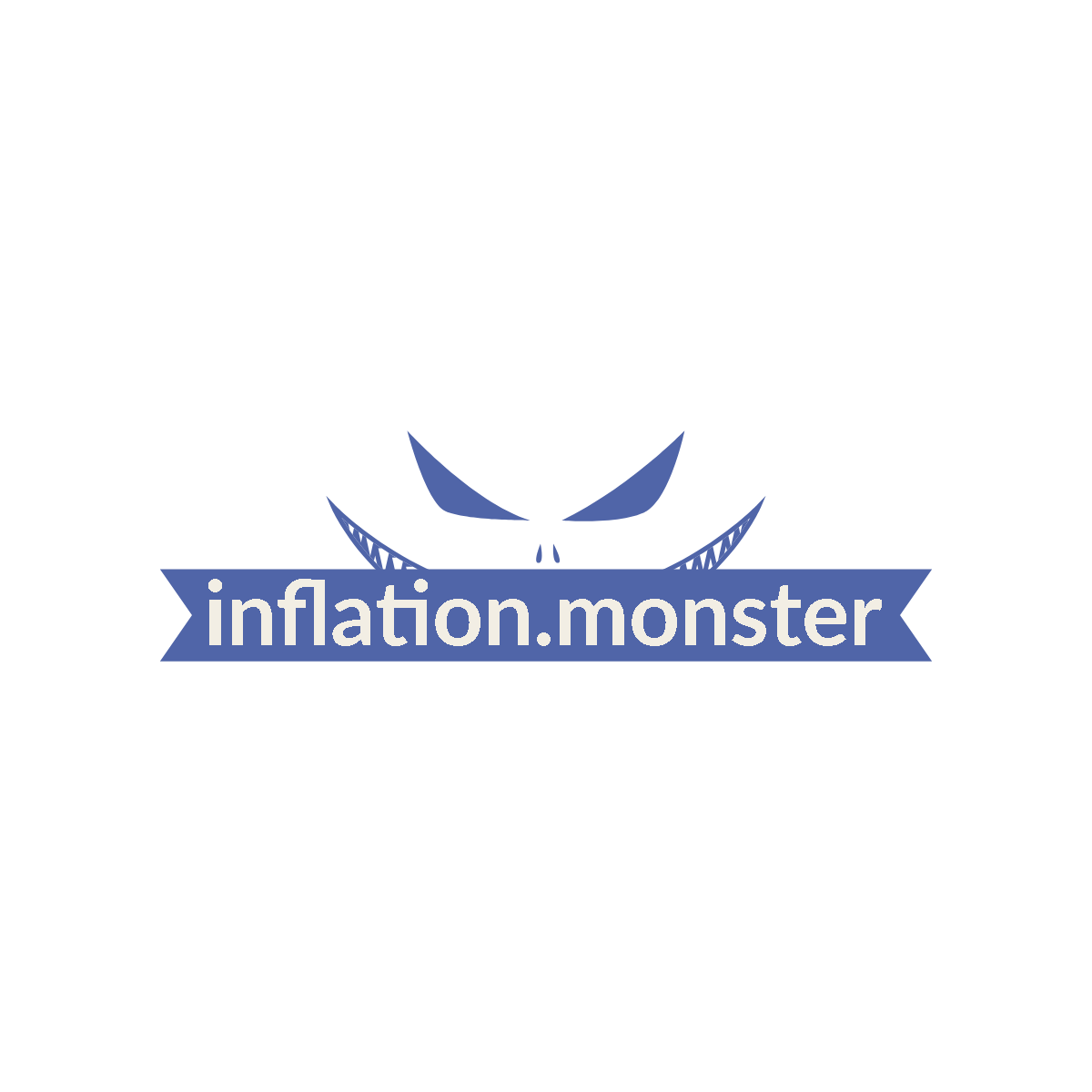Inflation, a word that can strike fear into the hearts of investors and economists alike. It’s a complex concept that has the power to disrupt financial markets and send shockwaves through economies. At Inflation.Monster, we’ve made it our mission to demystify this monster and help you understand its impact on money and economics. Join us as we explore the relationship between inflation and financial market volatility, diving deep into the world of hard money and equipping you with the knowledge to navigate this ever-changing landscape. Get ready to confront the inflation monster head-on.
The Relationship Between Inflation and Financial Market Volatility
Understanding the Link
Inflation and financial market volatility are closely interconnected. When inflation rises or is expected to rise, it can create uncertainty and instability in the financial markets. This is because inflation erodes the purchasing power of money and affects various sectors of the economy, which in turn influences market dynamics.
Historical Examples
Throughout history, there have been numerous instances where inflation has been correlated with financial market volatility. One example is the period of high inflation in the 1970s, commonly referred to as “stagflation.” During this time, stock markets experienced significant volatility as investors struggled to navigate the effects of rising prices on corporate profits and consumer spending. Another example is the financial crisis of 2008, where inflationary pressures and the bursting of the housing bubble led to a sharp increase in market volatility.
Key Factors That Drive Volatility
Several key factors contribute to the relationship between inflation and financial market volatility. Changes in interest rates, monetary policy decisions, economic indicators, and geopolitical events all play a significant role in driving volatility. Additionally, market sentiment, investor expectations, and the overall macroeconomic environment can also contribute to fluctuations in the financial markets.
Inflation’s Impact on Stocks
Stock Market Reactions
Inflation can have a significant impact on stock markets. As inflation rises, the purchasing power of consumers decreases, leading to lower corporate earnings and reduced consumer spending. This can negatively affect stock prices, causing increased volatility and uncertainty. Conversely, if inflation is unexpectedly low, stock markets may experience a period of stability and even growth as companies can maintain their profitability.
Volatile Sectors
Not all sectors of the stock market are affected equally by inflation. Some sectors, such as consumer staples and utilities, tend to be less sensitive to inflationary pressures due to the nature of their business operations. On the other hand, sectors such as commodities, technology, and financials can be more vulnerable to inflation, as changes in input costs, interest rates, and borrowing costs can directly impact their profitability and stock prices.
Investor Sentiment
Inflation can also influence investor sentiment and behavior. Rising inflation expectations may lead investors to demand higher returns or to shift their investments into assets that provide a hedge against inflation, such as commodities or inflation-protected securities. This shifting sentiment can contribute to increased market volatility as asset prices adjust to reflect changing investment preferences.

Effects on Bond Markets
Bond Prices and Yields
Inflation has a direct impact on bond prices and yields. When inflation rises, the purchasing power of future fixed interest payments decreases, leading to a decrease in the value of existing bonds. As bond prices decline, yields rise to compensate investors for the eroding value of their future returns. Conversely, if inflation is unexpectedly low, bond prices may increase, leading to lower yields.
Inflation-Protected Securities
In response to inflation, governments issue inflation-protected securities, commonly known as Treasury Inflation-Protected Securities (TIPS). These bonds provide investors with a hedge against inflation as their principal value adjusts based on changes in the Consumer Price Index (CPI). TIPS can help mitigate volatility in the bond market by offering investors a way to protect their purchasing power in an inflationary environment.
Implications for Fixed-Income Investors
For fixed-income investors, inflation presents both challenges and opportunities. Higher inflation erodes the real value of fixed interest payments, which reduces the purchasing power of future income. To combat this, investors may seek higher-yielding bonds or inflation-protected securities. Additionally, changes in inflation expectations can impact interest rates and bond prices, leading to potential capital gains or losses for investors.
Commodities and Inflation
Commodity Price Dynamics
Commodities, such as oil, gold, and agricultural products, are often considered a traditional hedge against inflation. When inflation rises, the cost of production and raw materials increases, leading to higher commodity prices. This can be due to supply chain disruptions, increased demand, or changes in input costs. As a result, commodity prices can be highly influenced by inflationary pressures and can contribute to overall market volatility.
Inflation Hedge or Risk?
While commodities are often seen as an inflation hedge, they can also pose risks to investors. Commodities, especially those with high volatility, can experience large price swings due to factors such as geopolitical tensions, weather conditions, or changes in demand and supply dynamics. Therefore, investing in commodities requires careful consideration of these risks alongside their potential as an inflation hedge.
Sector-Specific Considerations
Different sectors within the commodities market can be affected differently by inflation. For example, energy commodities like oil and natural gas are highly correlated with inflation due to their role as inputs in production and their impact on transportation costs. Agricultural commodities can also be influenced by inflation, as changes in input costs and supply chain dynamics directly affect their prices. Precious metals like gold and silver are often sought after as a store of value during periods of inflationary pressures.

Foreign Exchange Market Reactions
Currency Depreciation
Inflation can lead to currency depreciation, particularly when a country’s central bank responds to rising prices by implementing expansionary monetary policy. By increasing the money supply, central banks aim to stimulate economic activity, but this can also devalue the currency relative to other currencies. A depreciating currency can create volatility in the foreign exchange market as exchange rates fluctuate.
Capital Flows
Inflation can influence capital flows between countries. High inflation rates in one country may cause investors to shift their investments into countries with lower inflation rates, seeking greater stability and higher real returns. This movement of capital can impact exchange rates and increase volatility in currency markets.
Central Bank Response
Central banks play a crucial role in managing the relationship between inflation and financial market volatility. As inflation rises, central banks may respond by increasing interest rates to curb inflationary pressures. These interest rate decisions can impact currency values, bond yields, and overall market sentiment. Central bank communication and transparency in their decision-making process are also important factors that can influence market expectations and volatility.
Inflation and Real Estate
Property Valuations
Inflation can affect property valuations and the overall real estate market. As the cost of construction materials and labor increases with inflation, it can put upward pressure on property prices. This can be beneficial for property owners who see the value of their investments rise, but it can also create affordability challenges for potential homebuyers. Changes in property valuations can contribute to volatility in the real estate market.
Rental Market Dynamics
Inflation can influence rental market dynamics. As the cost of living rises, landlords may increase rental prices to offset these higher expenses. This can create affordability concerns for tenants and impact rental demand. Moreover, changes in inflation can also influence the demand for real estate as an investment, leading to fluctuations in property prices and transactions.
Construction Costs
Inflation can significantly impact construction costs, including labor, building materials, and permits. Higher costs can cause delays or cancellations of construction projects, affecting overall supply and demand dynamics in the real estate market. Additionally, inflation can influence financing costs for real estate developers and investors, as changes in interest rates and credit availability can directly impact the feasibility and profitability of projects.

Implications for Central Banks
Policy Responses
Central banks are tasked with managing inflation and its impact on financial market volatility. In response to rising inflation, central banks may implement contractionary monetary policies, such as increasing interest rates or reducing the money supply, to control inflationary pressures. Conversely, during periods of low inflation or deflationary risks, central banks may adopt expansionary monetary policies to stimulate economic growth and avoid market stagnation.
Interest Rate Decisions
Interest rate decisions made by central banks can have a profound impact on financial markets. Changes in interest rates can influence borrowing costs, investment decisions, and asset valuations. As inflation rises, central banks may choose to raise interest rates to curb inflation and stabilize prices. These interest rate decisions have ripple effects across various sectors of the economy and can contribute to volatility in financial markets.
Role in Managing Volatility
Central banks also have a role in managing financial market volatility caused by inflation. Through transparent communication and policy actions, central banks can provide stability and guidance to investors and market participants. By effectively managing inflation expectations and providing liquidity during periods of heightened volatility, central banks can help mitigate the adverse effects of inflation on the financial markets.
The Role of Fiscal Policy
Government Spending
Fiscal policy, implemented through government spending and taxation policies, can influence inflation and financial market volatility. Increased government spending, particularly during periods of inflationary pressures, can exacerbate inflation by injecting more money into the economy. However, prudent fiscal policies focused on long-term stability can help manage inflation and reduce market volatility.
Taxation Policies
Taxation policies can also impact inflation and financial markets. Changes in tax rates and incentives can influence consumer spending, business investment, and overall economic activity. Governments can use tax policies to manage inflationary pressures and encourage stability in the financial markets. However, sudden or unpredictable changes in tax policies can create uncertainty and contribute to market volatility.
Supply-Side Economics
Supply-side economics is a fiscal policy approach that focuses on stimulating economic growth through deregulation, tax cuts, and promoting business investment. By improving productivity and reducing business costs, supply-side policies aim to mitigate inflationary pressures and create a stable economic environment. The effectiveness of supply-side policies in managing inflation and financial market volatility has been a topic of debate among economists.
Strategies for Investors
Diversification
Diversification is a strategy often recommended to investors to manage the impact of inflation and financial market volatility. By investing in a mix of asset classes, such as stocks, bonds, commodities, and real estate, investors can spread their risk across different sectors and minimize the impact of any single market event. Diversification can provide stability to an investment portfolio and reduce exposure to the fluctuations caused by inflation.
Inflation-Linked Investments
Investors can also consider inflation-linked investments as a strategy to protect against inflation. These investments, such as TIPS or inflation-indexed bonds, provide returns that are directly linked to changes in inflation. By including inflation-linked investments in a portfolio, investors can preserve their purchasing power and potentially benefit from rising inflation. However, it’s essential to carefully evaluate the specific characteristics and risks associated with these types of investments.
Risk Management Tactics
Managing the risks associated with inflation and financial market volatility requires a proactive approach. Investors can employ risk management tactics, such as setting stop-loss orders, diversifying across different sectors and geographies, and regularly reviewing and rebalancing their portfolios. Staying informed about economic indicators, market trends, and geopolitical events can also help investors make informed decisions and adapt their strategies accordingly.
Managing Inflation Expectations
Inflationary Pressures
Managing inflation expectations is crucial for central banks and policymakers. Inflationary pressures can arise from various factors, such as changes in oil prices, labor costs, or monetary policies. Understanding the drivers of inflation and monitoring key economic indicators can help central banks anticipate and address potential inflationary pressures effectively.
Market-Based Measures
Market-based measures, such as inflation swaps, breakeven inflation rates, or inflation expectations derived from bond yields, provide insights into how investors perceive future inflation. Central banks and policymakers closely monitor these market-based measures to gauge market expectations and adjust their policies accordingly. The transparency and accuracy of these measures are vital for managing inflation and providing stability to financial markets.
Central Bank Communication
Clear communication from central banks is vital in managing inflation expectations and financial market volatility. Central banks regularly communicate their policy decisions, inflation targets, and economic outlooks to provide guidance and reduce uncertainty. Effectively conveying their intentions and actions helps shape market expectations and can influence investor behavior, enhancing market stability and mitigating inflation-related risks.
In conclusion, the relationship between inflation and financial market volatility is multifaceted and interconnected. Various factors drive this relationship, including changes in interest rates, investor sentiment, and the overall macroeconomic environment. Inflation impacts stocks, bond markets, commodities, foreign exchange markets, and real estate, causing fluctuations in prices, yields, and valuations. Central banks play a crucial role in managing inflation and financial market volatility through policy responses and interest rate decisions. Fiscal policies, such as government spending and taxation, also contribute to managing these dynamics. For investors, diversification, inflation-linked investments, and risk management strategies are essential tools to navigate the impact of inflation and financial market volatility. Ultimately, understanding and managing inflation expectations is key, and central bank communication and market-based measures are vital in providing stability to the financial markets.




